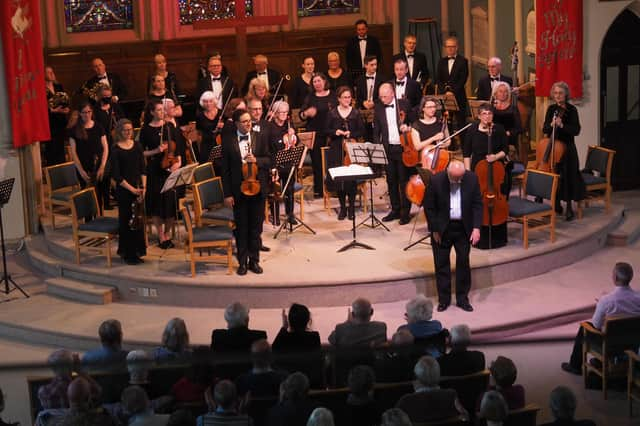St Cecilia Orchestra bring Italian theme to Ripon


Led by their long-standing conductor Xen Kelsey, the audience was treated to an Italian-themed evening of joyful works by Mendelssohn and Albinoni.
Felix Mendelssohn had been a child prodigy and wrote his Overture to ‘A Midsummer Night’s Dream’ in 1826 when he was only 17, adding more incidental music for the play a little later.
Advertisement
Hide AdAdvertisement
Hide AdThe Overture opened with bustling momentum, setting a perfect magical mood for the evening. This was a performance full of rhythmic energy, with bold tuttis and plenty of contrast.
The horns soared through the texture with great clarity with warm, lyrical tone. A final energetic ‘Rüpeltanz’ (Ruffian’s Dance) ended this selection from ‘A Midsummer Night’s Dream’ and featured some particularly agile clarinet playing.
The first half of the concert ended with the Oboe Concerto in D minor by the Italian Baroque composer Albinoni, played with great poise, neat finger work and rhythmic precision by soloist Josh Hall.
The long melodic lines of the lyrical second movement were beautifully shaped, with occasional ensemble problems overcome by strong rhythmic drive from the cellos and basses.
Advertisement
Hide AdAdvertisement
Hide AdBen Jarvis was equally alert and communicative in Albinoni’s trumpet concerto in B flat, providing a punchy start to the second half.
Also originally for the oboe, this concerto is often played by trumpeters, surely due to the appeal of the martial rhythms of the first movement, along with the fanfare-like motifs of the final movement, all cleanly executed by Ben. Both soloists engaged well with the audience and brought a fresh feel to these eighteenth-century works.
The concert ended in uplifting style with Mendelssohn’s fourth symphony, written in 1833 and named the ‘Italian’ for its portrayal of the emotions roused in him during an Italian tour in his early 20s.
He declared to his sister Fanny that he wanted to write ‘the jolliest piece I have ever done’, and the St Cecilia Orchestra captured this sentiment wholeheartedly throughout.
Advertisement
Hide AdAdvertisement
Hide AdThe first movement, with its upwards-reaching opening theme, was played with dynamic contrast and energy, with precise playing even when the music was at its most complex. The ‘con moto’ style of the next two movements was managed well, with the ensemble never faltering as the rhythmic momentum carried the audience along.
In the third movement, a traditional Minuet and Trio, the wind and horns were able to show off delicious tonal colours, particularly in the Trio.
The fourth movement provided a fitting finale to this most enjoyable concert, with all sections displaying nimble precision and rhythmic accuracy as two fast Italian dances (Saltarello and Tarantella) combined their scurrying spider-like themes.
This celebration of Italy was warmly appreciated by the capacity audience, who, fittingly, walked out into an evening with the summer sun still shining.
Kate Morgan